E RNEST A LFRED T HOMPSON W ALLIS B UDGE (1857-1934) was Keeper of the Department of Egyptian and Assyrian Antiquities at the British Museum for thirty years. Knighted for services to the Museum, Budge travelled widely on its behalf throughout the Middle East, collecting an enormous number of antiquities and excavating at many sites in Egypt, the Sudan and in Iraq. Born of a poor Cornish family and something of a child prodigy, Budge had earlier worked as a runner at a London stationers for eight years, deciphering Assyrian cuneiform texts in his spare time, before finally obtaining a scholarship to Cambridge University and his long-dreamt-of employment at the British Museum. Working with an astonishing variety of ancient languages, Budge eventually published an unmatched 140 major works, many of them pioneering translations, dealing with texts and objects in the British Museums collections that he himself had found. Although his manner raised the ire of many of his colleagues, Budge was a vivid writer and a great popularizer a man who, it was later said, had done more than anyone to arouse an interest in the language and writings of ancient Egypt.
J OHN R OMER graduated from the Royal College of Art in 1966 and began his work in Middle Eastern archaeology shortly thereafter, serving on American and German expeditions in Egyptian Thebes and acting as Field Director of the Brooklyn Museum Theban Expedition, conducting the first physical survey and conservation studies in the Valley of the Kings, and excavating the tomb of Ramesses XI. Romer has also dedicated a great part of his time to archaeological conservation and, as an aid to raising public awareness of the importance and fragility of the past, has made many TV and radio documentaries, to international critical acclaim. Besides numerous specialist articles and reports, his books have included Valley of the Kings, Ancient Lives: The Story of the, Pharaolis Tombmakers, Testament: The Bible and History and The Seven Wonders of the World: A History of the Modern Imagination (with Elizabeth Romer). His latest book is The Great Pyramid: Ancient Egypt Revisited (2007).
John and Elizabeth Romer live and work around the Mediterranean and the Middle East, and share a house in Tuscany.
E. A. WALLIS BUDGE
The Egyptian Book
of the Dead
With a new Introduction by JOHN ROMER
PENGUIN BOOKS
PENGUIN CLASSICS
Published by the Penguin Group
Penguin Books Ltd, 80 Strand, London WC2R 0RL , England
Penguin Group (USA) Inc., 375 Hudson Street, New York, New York 10014, USA
Penguin Group (Canada), 90 Eglinton Avenue East, Suite 700, Toronto, Ontario, Canada M4P 2Y3
(a division of Pearson Penguin Canada Inc.)
Penguin Ireland, 25 St Stephens Green, Dublin 2, Ireland (a division of Penguin Books Ltd)
Penguin Group (Australia), 250 Camberwell Road, Camberwell, Victoria 3124, Australia
(a division of Pearson Australia Group Pty Ltd)
Penguin Books India Pvt Ltd, 11 Community Centre, Panchsheel Park, New Delhi 110 017, India
Penguin Group (NZ), 67 Apollo Drive, Rosedale, North Shore 0632, New Zealand
(a division of Pearson New Zealand Ltd)
Penguin Books (South Africa) (Pty) Ltd, 24 Sturdee Avenue, Rosebank, Johannesburg 2196, South Africa
Penguin Books Ltd, Registered Offices: 80 Strand, London WC2R 0RL , England
www.penguin.com
First published in Great Britain as The Bank of Dead by Kegan Paul, Trench, Trubner 1899
One-volume revised edition published 1923
This edition first published in Penguin Classics 2008
1
New Introduction, Historical Outline and Further Reading copyright John Romer. 2008
All rights reserved
The moral right of the translator and editor has been asserted
Except in the United States of America, this book is sold subject
to the condition that it shall not, by way of trade or otherwise, be lent,
resold, hired out, or otherwise circulated without the publishers
prior consent in any form of binding or cover other than that in
which it is published and without a similar condition including this
condition being imposed on the subsequent purchaser
978-0-14-191815-0
CONTENTS
______________
2. O SIRIS, THE GOD OF J UDGMENT, THE
R ESURRECTION , I MMORTALITY, THE E LYSIAN
FIELDS, ETC
THE EGYPTIAN BOOK OF THE DEAD
________________
CHAP .
.
________________
.
________________
CXLI.
CXLII. T HE B OOK WHICH A MAN SHALL RECITE FOR HIS FATHER OR FOR HIS SON DURING THE FESTIVALS OF MENTET
T HE B OOK WHICH A MAN SHALL RECITE FOR HIS FATHER OR FOR HIS SON DURING THE FESTIVALS OF MENTET
________________________________
INTRODUCTION
to this Edition by John Romer
___________________________
This book is part of our intellectual history. Just as John Bull is British, the Eiffel Tower is French, and God often speaks in King James English, so this particular Book of the Dead is an integral part of what we now call ancient Egypt. Apart from the sacred texts of the great religions, it is also the bestselling edition of any ancient text. And its influence extends beyond the realms of ancient history.
The remarkable celebrity of these ancient funerary texts is due to their translator, Sir Ernest Alfred Thompson Wallis Budge. His was the first edition of the Book of the Dead to have been produced in English in a convenient and inexpensive format. Published in 1899 and reissued in 1909 in an enlarged and revised three-volume edition the version given here it has remained continuously in print. From T. S. Eliot, Ezra Pound and William Faulkner to J. R. R. Tolkien and Norman Mailer, everyone read and absorbed the contents of Budges compact book with its yellow dustjacket, its light brown buckram binding and its inky illustrations.
The books greatest influence flowed through the meticulous pen of Sir James Frazer, Budges near-contemporary at Cambridge and, arguably, the worlds most influential anthropologist. Frazers famed Osiris, one of the dying and resurrecting gods on whom he lavished several bestselling volumes, is largely drawn from Budges Book of the Dead a borrowing that Budge reciprocated in his last work, which was, in turn, partly based on Frazers Golden Bough . It is unlikely, though, that either Budge or Frazer were happy with the uses to which Sigmund Freud and Carl Jung put their joint researches, and to such vast effect.
Curiously enough, when Jean-Franois Champollion, the decipherer of hieroglyphs, first read some of ancient Egypts funerary scrolls in the 1820s, the West was disappointed. Though studious antiquaries had long maintained that they held forgotten wisdoms, Champollion declared that their diffuse and difficult calligraphy appeared to record nothing but the rites of ancient funerals. A few years later, a closer study by Dr Richard Lepsius, a Berlin professor and Champollions successor, established that some of these scrolls also appeared to contain words spoken by the dead themselves. Yet later, Lepsius came to understand that they also held an even wider diversity of themes within them prayers, incantations, hymns, dialogues, confessionals, lamentations and rituals each one divided from its neighbour by pretty illustrations.
In 1842 Lepsius published the first modern edition of one of these funerary scrolls, setting its ancient text into 165 separate chapters, and rendering the abbreviate forms of its cursive script into long lines of formal hieroglyphics that could easily be read by egyptologists. Entitling his work Das Todtenbuch der Aegypter , derived from the Arabic phrase Kitab al Mayyitun dead peoples books that had long been used by Egyptian villagers to describe the scrolls they occasionally found beside the mummies of the ancient dead, Lepsius perpetuated the generic name that Champollion had first given the scrolls. And, when in 1867 Dr Samuel Birch of the British Museum published an English translation of Lepsius hieroglyphics, he reconfirmed this designation in his direct translation into English as The Book of the Dead.


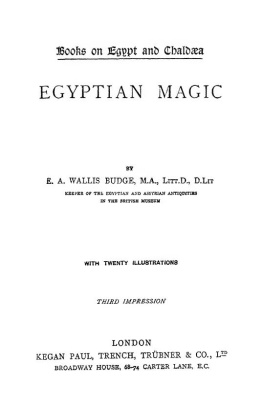
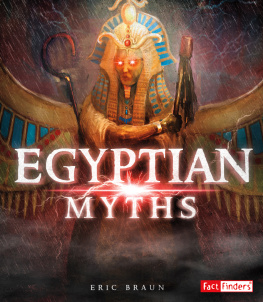
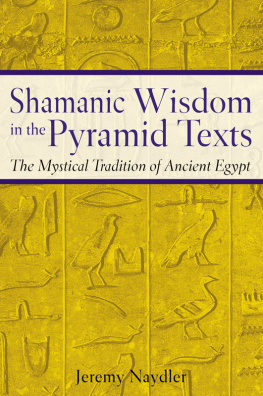
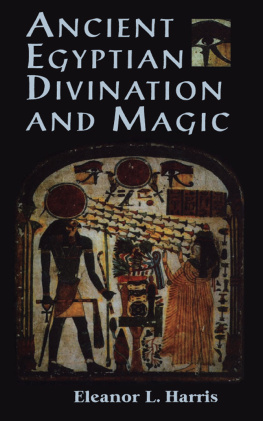
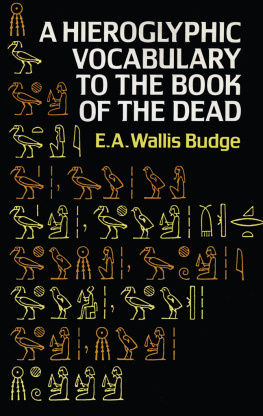
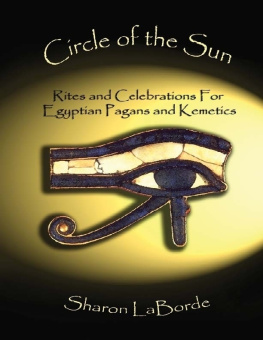
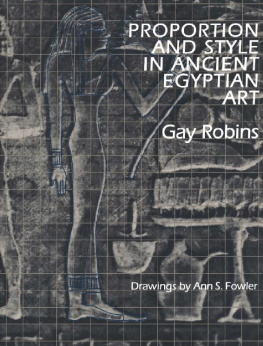

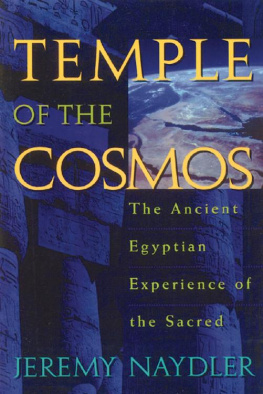
 CLASSICS
CLASSICS T HE B OOK WHICH A MAN SHALL RECITE FOR HIS FATHER OR FOR HIS SON DURING THE FESTIVALS OF MENTET
T HE B OOK WHICH A MAN SHALL RECITE FOR HIS FATHER OR FOR HIS SON DURING THE FESTIVALS OF MENTET